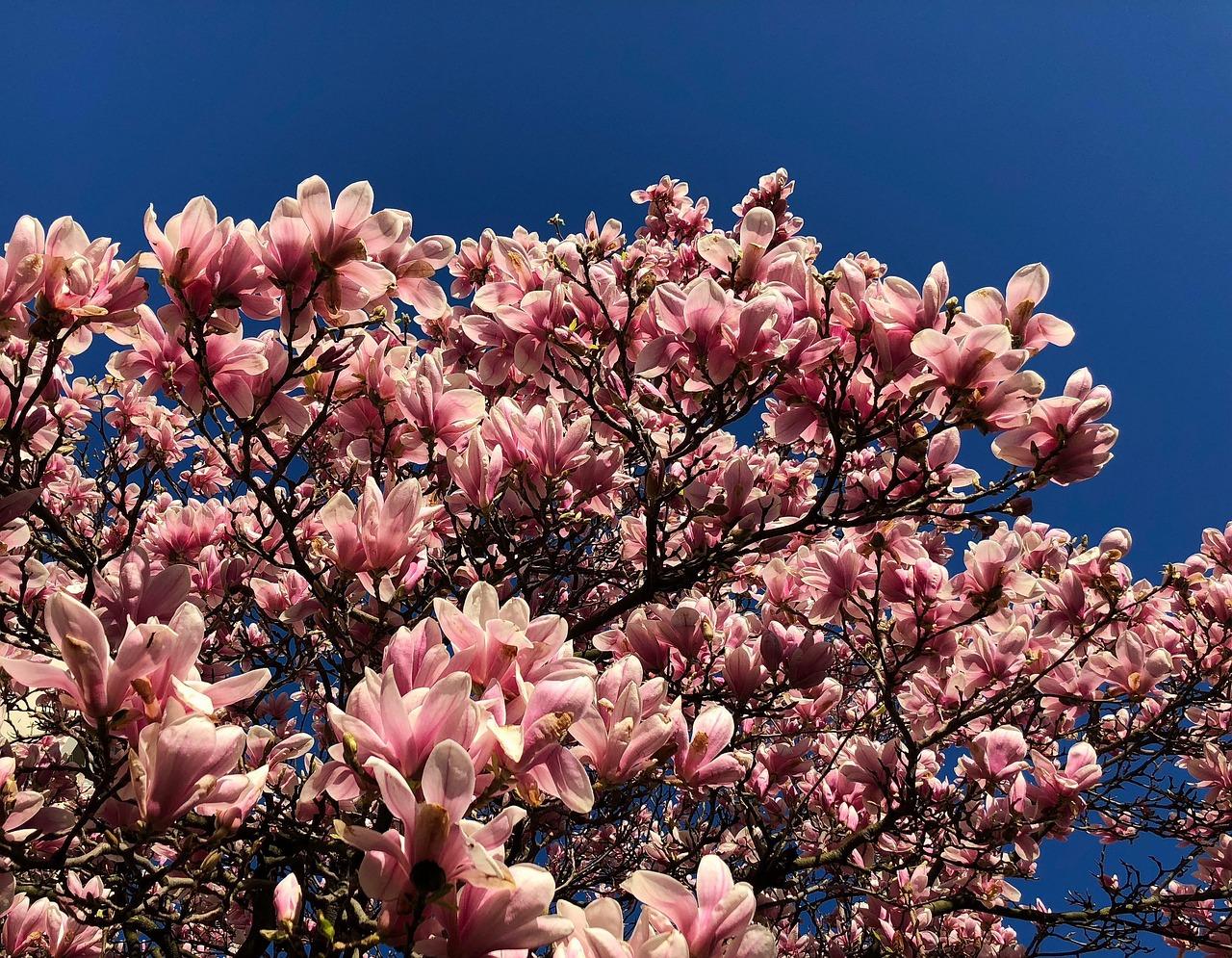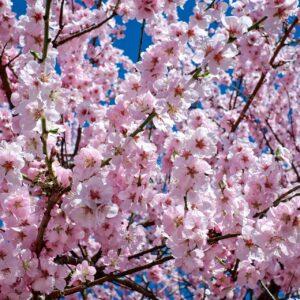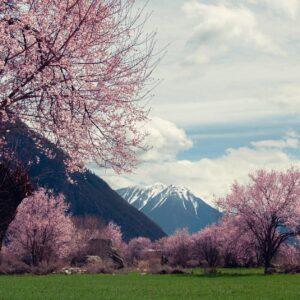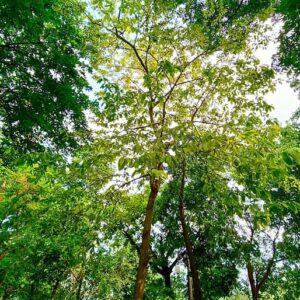The Red Magnolia Tree“Is the romantic focal point of the garden.
The Red Magnolia Tree is a deciduous or semi-evergreen blooming tree prized for its lovely form and huge, tulip-like red blooms. It is a vibrant member of the Magnolia genus. Although the majority of magnolias are white or pink, some species and hybrids have been selectively bred to produce blooms in rich red to burgundy, which makes them unusual and eye-catching additions to any garden.
Some common red magnolia types are:
‘Red Lucky’ Magnolia × soulangeana
‘Genie’ Magnolia
‘Vulcan’ Magnolia
“”Black Tulip”” Magnolia
These kinds are perfect for gardens of all sizes because of their manageable size and stunning color, which complements traditional magnolia beauty.
🌿 Botanical Synopsis
Red cultivar Botanical Name: Magnolia spp.
Red Tulip Magnolia is the common name for the Red Magnolia.
Family: Magnoliaceae
Kind: Flowering tree that is deciduous or semi-evergreen
Height: 10–20 feet (sometimes up to 25 ft)
Depending on the kind, the spread can range from 6 to 15 feet.
Leaves: Ovate or elliptical, big, glossy green
Flowers: fragrant, big, cup- or tulip-shaped, with hues of red, crimson, and burgundy
Blooming Season: Late winter to early spring, with some reblooming during the summer
Moderate growth rate
☀️ Sunlight and Climate Needs
sunlight:
Grows well in full sun to partial shade
The finest flowering is guaranteed by at least six hours of direct sunshine every day.
Weather:
Favors moderate weather
Depending on the variety, it’s appropriate for USDA zones 5–9.
When established, can withstand moderate frost
Temperature Range:
Optimal growth between 15 and 30°C
Protect young trees from strong frost or drying winds
☀️ In warmer areas, blooms are shielded from fading by partial afternoon shade.
💧 Water Requirements
Young Trees:
Water twice or three times a week until established.
Maintain consistent soil moisture during the first growing season.
Trees that are fully grown:
When it’s dry, water thoroughly once a week.
Prefers continuous moisture but tolerates minor droughts
💧 Make sure there is good soil drainage to prevent root rot.
Requirements for Soil
Type:
Chooses soil that is rich, loamy, and well-draining
Accepts clay or sandy soils as long as compost is added as a soil amendment
pH Range: Between slightly acidic and neutral (5.5 and 7.0).
Mulching:
Use organic mulch in a 2–3 inch coating.
Helps to control temperature, protect roots, and retain moisture
Magnolias hate being moved or root-pruned, so don’t bother the roots.
Fertilizing Schedule
First Year: At planting, apply well-rotted manure or organic compost.
Annual Feeding:
Use a balanced slow-release fertilizer with a ratio of 10-10-10 or 12-4-8 in the early spring.
A second, optional feed in midsummer for reblooming types
Excess nitrogen promotes leaf growth at the expense of flowers.
Maintenance and Pruning
When to prune:
Immediately following bloom in late spring or summer
When sap is rising, avoid severe trimming in the winter and spring.
The Pruning Process:
Eliminate any branches that are dead, broken, or crossing each other.
Light sculpting to keep the shape intact
Don’t prune too aggressively since it diminishes the possibility of blooming.
The majority of red magnolias grow upright and naturally dense, requiring little pruning.
🌱 Multiplication
Seeds:
New trees may vary from the parent (not true to type), and it takes time.
Cut pieces:
Use rooting hormone for semi-hardwood cuttings taken in the summer.
Tissue Culture or Grafting:
The majority of red magnolia cultivars are grafted to ensure stability and accurate color.
苗 nurseries offer grafted seedlings, which guarantee early flowering and a deep red hue.
🐛 Insects & Diseases
Normally resistant, but may experience:
Aphids
insects that are covered in scales
Thrips
mildew or fungal leaf spots in humid regions
Neem oil or insecticidal soap should be used to treat pests. To avoid fungal illnesses, make sure there is good air circulation.
🌸 Applications in Landscaping and Decoration
Perfect for:
small gardens and front yards
entrances or patios
Asian-inspired landscapes or courtyards
seasonal focal points and displays centered on flowers
Garden Friends:
Hydrangeas, Japanese maples, camellias, azaleas
Red magnolia trees offer amazing seasonal interest, particularly in early spring, when they are at their most beautiful prior to leaf-out.
At the end, there is a conclusion.
With its magnificent blossoms, compact growth, and minimal maintenance, the Red Magnolia Tree represents beauty and passion. Red magnolias require little maintenance yet deliver beauty, aroma, and long-lasting pleasure, regardless of whether you’re planning a formal garden or just want to wow in the spring. They are ideal for gift plantings that make a statement, romantic settings, or creative focal points.”
Magnolia tree
₨4,000.00
“The gorgeous decorative tree known as the **Red Magnolia Tree** has flowers that range in color from a rich reddish-pink to a deep burgundy. It frequently refers to cultivars of *Magnolia × soulangeana* or *Magnolia liliiflora*. These tulip- or cup-shaped blooms produce a stunning floral show in early spring, sometimes even before the leaves begin to grow.
Red Magnolia favors wet, well-drained, somewhat acidic soil and full sun to moderate shade. The tree has smooth, gray bark and large, green leaves that create a verdant background for the colorful blooms. It requires little care and draws pollinators like bees and butterflies. The Red Magnolia is ideal as a solitary specimen or in courtyards and gardens, bringing beauty, color, and aroma to any setting.
“





Reviews
There are no reviews yet.